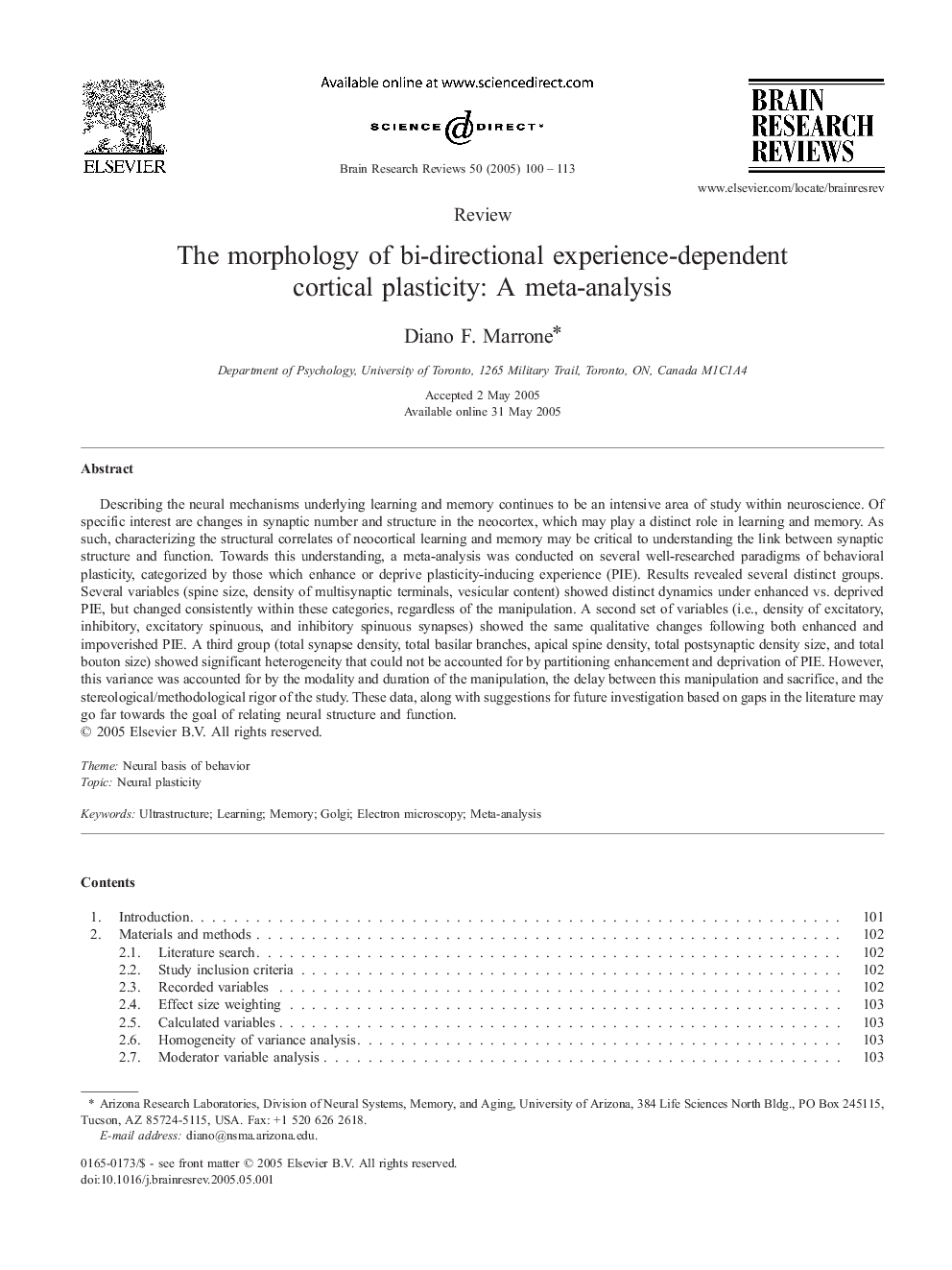| Article ID | Journal | Published Year | Pages | File Type |
|---|---|---|---|---|
| 9423046 | Brain Research Reviews | 2005 | 14 Pages |
Abstract
Describing the neural mechanisms underlying learning and memory continues to be an intensive area of study within neuroscience. Of specific interest are changes in synaptic number and structure in the neocortex, which may play a distinct role in learning and memory. As such, characterizing the structural correlates of neocortical learning and memory may be critical to understanding the link between synaptic structure and function. Towards this understanding, a meta-analysis was conducted on several well-researched paradigms of behavioral plasticity, categorized by those which enhance or deprive plasticity-inducing experience (PIE). Results revealed several distinct groups. Several variables (spine size, density of multisynaptic terminals, vesicular content) showed distinct dynamics under enhanced vs. deprived PIE, but changed consistently within these categories, regardless of the manipulation. A second set of variables (i.e., density of excitatory, inhibitory, excitatory spinuous, and inhibitory spinuous synapses) showed the same qualitative changes following both enhanced and impoverished PIE. A third group (total synapse density, total basilar branches, apical spine density, total postsynaptic density size, and total bouton size) showed significant heterogeneity that could not be accounted for by partitioning enhancement and deprivation of PIE. However, this variance was accounted for by the modality and duration of the manipulation, the delay between this manipulation and sacrifice, and the stereological/methodological rigor of the study. These data, along with suggestions for future investigation based on gaps in the literature may go far towards the goal of relating neural structure and function.
Keywords
Related Topics
Life Sciences
Neuroscience
Neuroscience (General)
Authors
Diano F. Marrone,
